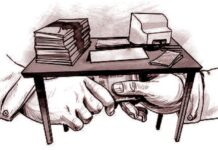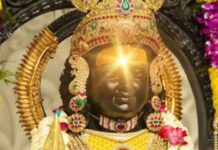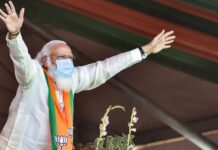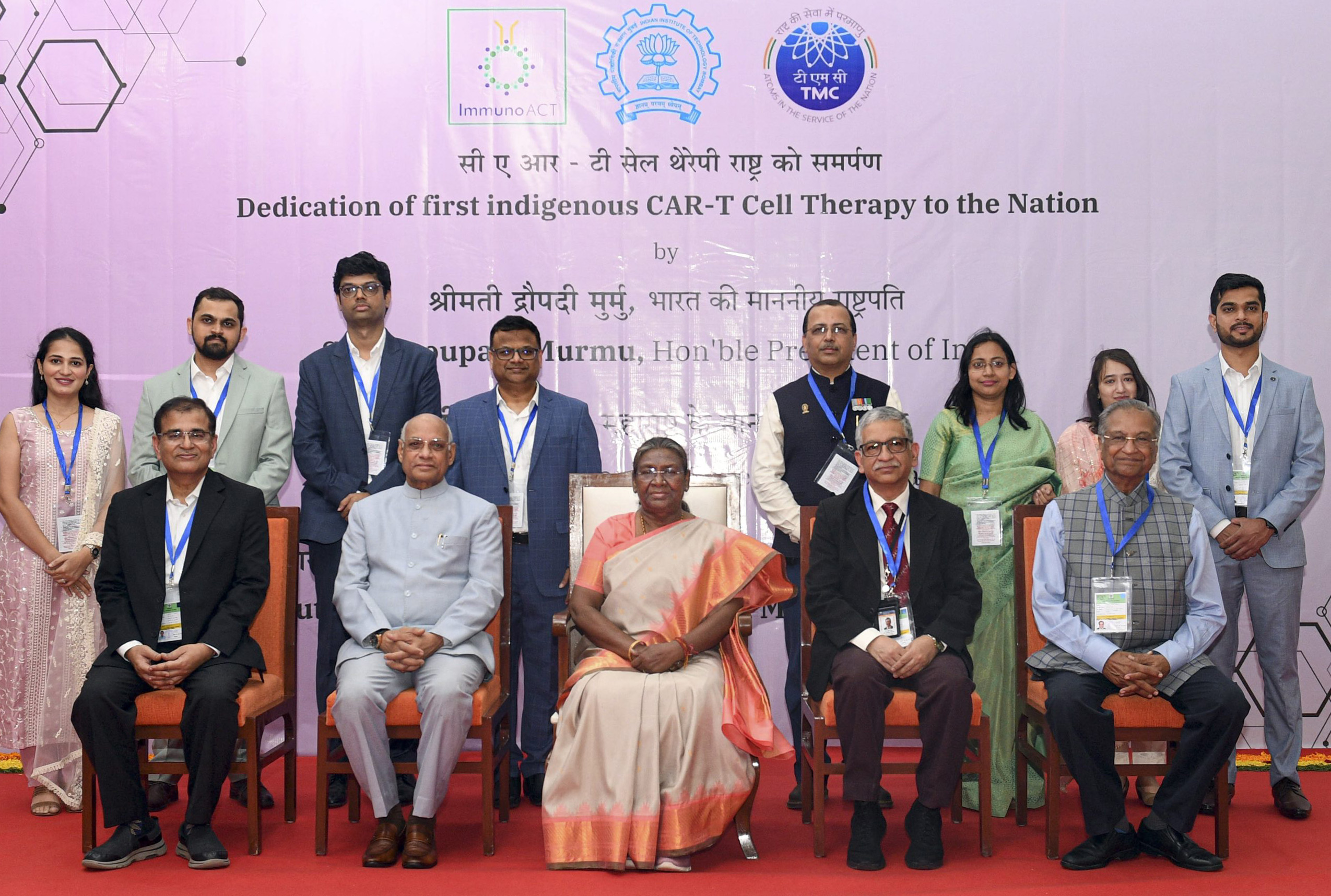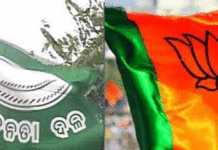The wooden chariots (mobile form of the temple) are the temporary abodes of the Jagannath Trinity. The deities are installed in these chariots (locally called ad Rathas) ceremonially and visits the famous Gundicha temple for nine days and on the ninth day, the deities returned back to the temple. These chariots are built by several pieces of wood with canonical prescription. Though no such texts related to the chariot building and on it’s art has come to our notice, but artisans used to built the Rathas and draw many pictures in these by learning and transmission from their predecessors.
The chitrakaras used to draw paintings on the different parts of the body of the chariot, such as painting of lotus petals in blue and red colours on the wheels, border designs on the muhantis (long wooden bars which joins the axiles of the wheels), lotus flowers with viraja lions, kinnaras, lions and nayikas on the sikhara dambaru (vertical wooden pieces on the four cardinal directions which binds the muhanti and the ground of the chariots), the hamsa patta, (hori-zontal band running above the wheels) which also serves as the border of the Ratha’s ground, continues several swans on blue background. These are also called as Pithamandana. On the base or ground of the chariots huge painted wooden idols of sarathi (charioteer) are also placed during Ratha Yatra, so also the horses. There are also painted figures of dvarapalas on the front wooden pillars. For example Jaya-Vijaya on the chariot (Nandi-ghosa) of Lord Jagannath. The painting of an eight petalled inverted lotus on the prabhavali (halo) of the throne is also drawn. Over it a kirtimukha (locally called as ‘Rahumunda’) and on the two sides makaras are also painted. These are all drawn according to the silpa tradition. Interestingly this inverted lotus is seen flanked by different divinities, such as Indra and Brahma in Jagannath’s chariot. Just above the throne of the deities, there are duara-ghoda (triangular decorated boards) with a kirtimukha atop and two makaras on either side can be seen on all four sides of chariots. In these boards we found nayikas (celestial maidens) holding chamara (chauri). But these are not paintings but sketches by red colour. It is to note that, these triangular boards containing celestial maidens holding fly whisks more or less resembles like that of the upper portion of the torana (gateway) of the famous Muktesvara temple at Bhubaneswar. It is probable that, this feature is imitated from temple art. Over this triangular board there are again small vertical wooden bands which support the para-bhadi contain figures of risis (sages). For example, in the chariot of Lord Jagannath, sage Atri’s figure have been painted. Above it stands the para-bhadi (wooden pidhas arranged one upon the another) where 6 figures of peasons are painted. These wooden pidhas are also resembles like the pidha roofs of the medieval temples. This para-bhadi is also called as ‘Kapotali’. Over this para-bhadi, there are two wooden painted parrots looking backward. These parrots support the kalasa of the chariots which are painted like a visvapadma (the lotus petals depicted both upward and downward.
Besides these, there are several parsva-devatas placed on the chariots are also wooden painted figures like sarathis (charioteers) and nayikas display fine work-manship showing typical Orissan style. Among these figures, some represent three dimentional painting. These wooden chariots contain several traditional paintings though not like murals of the mathas and temples but from canonical prescription like that of temple art and can be regarded as one of the component of Puri School of Painting and is still living.







